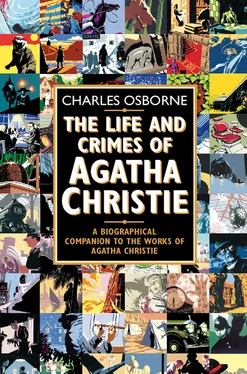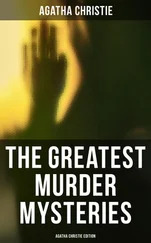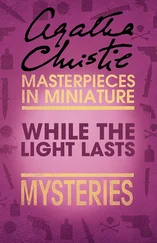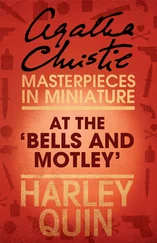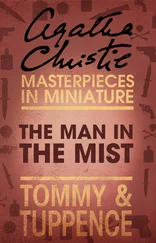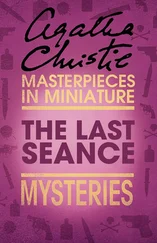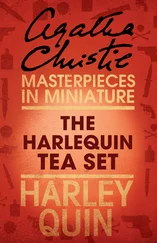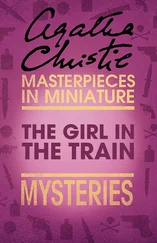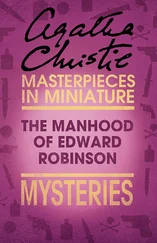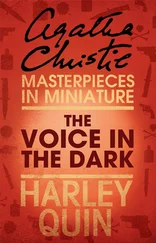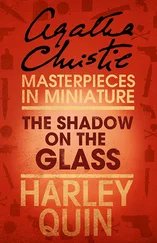Parts of The Mystery of the Blue Train are set in the English village of St Mary Mead, which we will later come to know as the home of Miss Marple, a Christie detective we have yet to encounter. A minor character in the present novel is Miss Viner, an elderly inhabitant of the village who, with her curiosity and her sharp powers of observation, is quite as definitely an adumbration of Miss Marple as Caroline Sheppard was in The Murder of Roger Ackroyd.
There are one or two inconsistencies in the plot. Why, for instance, does Poirot say of Derek Kettering that he ‘was in a tight corner, a very tight corner, threatened with ruin,’ when Kettering has, in fact, been offered £100,000 in return for allowing his wife to divorce him? Agatha Christie told an interviewer in 1966 that The Mystery of the Blue Train ‘was easily the worst book I ever wrote … I hate it’. And her final verdict, in her autobiography, was that it was commonplace, full of clichés, and that its plot was uninteresting. ‘Many people, I am sorry to say, like it,’ she added. And so they should. Third-rate Christie is, perhaps, to be sneezed at, but not second-rate Christie.
The Seven Dials Mystery (1929)
The difficulties which Agatha Christie had experienced in writing during the period of nervous exhaustion which led to her disappearance, and even later, while she was recovering, seemed to evaporate as soon as she and Archie Christie were divorced. She continued to write stories for publication in magazines, especially when she needed ready cash for repairs to Ashfield, her childhood home, or for some other unexpected expense. A story brought in about £60, and took a week to write. At the same time, she found that ideas for novels were coming quite easily to her. Having especially enjoyed writing The Secret of Chimneys five years earlier, she decided to employ some of the characters and the setting of Chimneys in a new light-hearted thriller, The Seven Dials Mystery, for she continued to find that thrillers required less ‘plotting and planning’ than murder mysteries.
The Seven Dials of the title can be taken to mean either the district of Seven Dials in the West End of London, or the dials of seven alarm clocks (Mrs Christie favours the older spelling, ‘alarum’) which are discovered ranged along the mantelpiece in the room at Chimneys in which a young man is found dead in his bed. The action takes place partly at Chimneys, the country seat of Lord Caterham, and partly in various other places, among them the sinister Seven Dials Club, in Seven Dials, which ‘used to be a shimmy sort of district round about Tottenham Court Road way’. Seven Dials is actually a block or two southeast of the bottom of Tottenham Court Road, and not noticeably less slummy now than in 1929. (Two of its theatres which stand side by side, the Ambassadors and St Martin’s, acquired Christiean connections when, in 1952, Agatha Christie’s play, The Mousetrap, opened at the Ambassadors, and in 1974 transferred next door to the St Martin’s where, at the time of writing, it is still running.)
As usual with Agatha Christie’s thrillers, the mystery element is not neglected. Not only does the reader have to discover who killed two of the house guests at Chimneys, he also has to worry about the secret society at Seven Dials and the identity of its leader, referred to by his cronies as ‘Number Seven’. Among the characters from The Secret of Chimneys who reappear in The Seven Dials Mystery are some of the representatives of law and order, including Colonel Melrose, the Chief Constable, and the stolid, reliable Superintendent Battle of Scotland Yard. Lord Caterham’s daughter, Lady Eileen Brent, familiarly known as ‘Bundle’, who had played an important role in The Secret of Chimneys, is the amateur sleuth who attempts to solve the Seven Dials Mystery with the aid of a couple of amiably silly young men, one of whom, Bill Eversleigh (also in Chimneys), works at the Foreign Office.
The Seven Dials secret society is in many ways similar to the secret organization headed by the mysterious Mr Brown in The Secret Adversary, but its aims turn out to be not at all similar to those of Mr Brown’s group. The reader is not likely to discover the identity of Number Seven before it is revealed to Bundle Brent, and whether one discovers the identity of the murderer (not the same person) will depend on how one interprets an ambiguous utterance quite early in the piece. The solution to the mystery of the Seven Dials secret society is, in fact, more than usually ludicrous, but such is the air of Wodehousian inconsequentiality and charm with which Agatha Christie has imbued the characters and the atmosphere of her story that it hardly matters. The Seven Dials Mystery has not quite the freshness and insouciance of The Secret of Chimneys but it is in very much the same mould, and is one of the more engaging of the early thrillers.
As an author, Mrs Christie was not given to making comments in propria persona, but you gain a certain amount of information about her attitudes by noting what is said by characters of whom she approves. Superintendent Battle reveals a tough edge to his cosy, bourgeois normality when he speaks contemptuously of those who play safe on their journey through life. ‘In my opinion,’ he tells Bundle, ‘half the people who spend their lives avoiding being run over by buses had much better be run over and put safely out of the way. They’re no good.’ Even Bundle is shocked by the brutality of Superintendent Battle’s sentiments, which will issue a few years later from the lips of kindly Major Despard in Cards on the Table, in almost the same words: ‘I don’t set as much value on human life as most people do … The moment you begin being careful of yourself – adopting as your motto “Safety First” – you might as well be dead, in my opinion.’ (‘I have never refrained from doing anything on the grounds of security,’ Mrs Christie was to reveal in her autobiography.)
‘Hearts just as pure and fair/May beat in Belgrave Square/As in the lowly air/Of Seven Dials’, wrote W. S. Gilbert in Iolanthe. Oddly, Mrs Christie said very much the same thing in The Seven Dials Mystery, and was rewarded with initial sales of over 8,000 copies. This was thought by all concerned to be highly satisfactory: it was to be a good twenty years before the first printing of a Christie novel reached 50,000 copies.
More than fifty years later, by which time The Seven Dials Mystery had become a quaint old period piece without losing its power to entertain and to mystify, a British commercial television company produced a film of Agatha Christie’s thriller, in a faithful adaptation by Pat Sandys which was first transmitted in Great Britain on 8 March 1981, and on 16 April in the United States. Sir John Gielgud made a convincing Lord Caterham, with Cheryl Campbell very much in period as Bundle, Harry Andrews as an excellent Superintendent Battle, Christopher Scoular as Bill Eversleigh, and James Warwick, Leslie Sands and Lucy Gutteridge in other important roles. The director was Tony Wharmby. ‘The millions around the world,’ wrote the television critic of The Times the following day, ‘on whom television co-productions are regularly foisted will in this case get their vicariously spent money’s worth…. Mere entertainment? Yes, and why not? There is at present no dearth of Plays for Today purporting to school us in the so-called realities of life.’ On its first showing on London Weekend TV the film, which ran for two-and-a-half hours with commercial breaks, topped the ratings with fifteen million viewers.
Partners in Crime TOMMY & TUPPENCE SHORT STORIES (1929)
Читать дальше
